Where Can You Skydive?
Skydiving
Posted by: Skydive Palm Beach
9 months ago
Where can you skydive? Um, in the sky of course! In actuality, the answer to that question is waaay more in-depth. Behind every single skydive is a complex and highly-regulated world that makes it all possible.
Whether you’re dreaming of jumping over breath-taking scenery or just curious about the inner workings behind the jump, this article will take you behind the scenes to explain: How does the magic happen?
From skydiving spots that feel kind of off the grid to those near urban centers, and even those wild jumps into packed sports stadiums, let’s unravel the logistics behind skydiving!
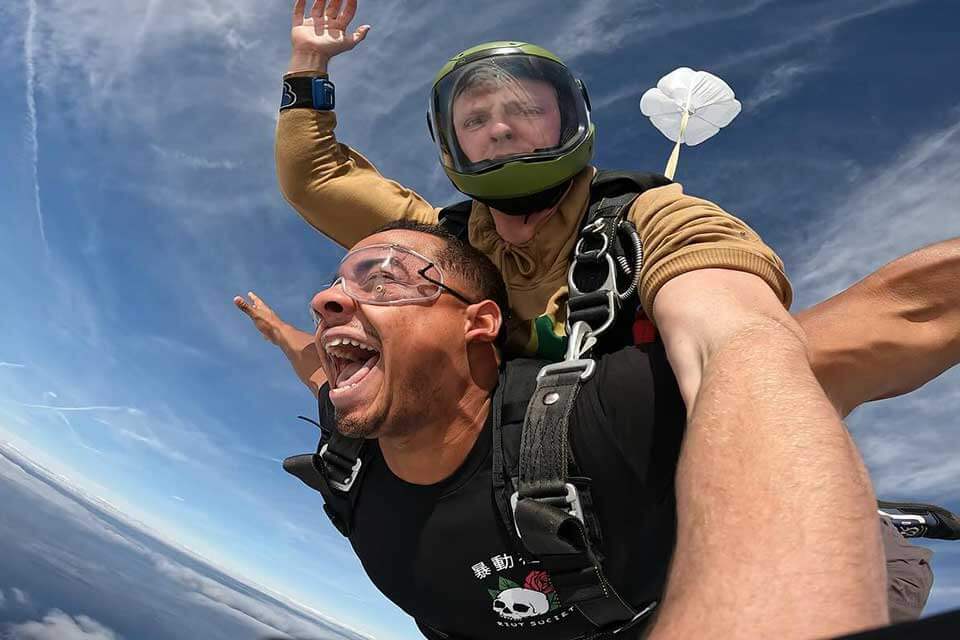
Who Regulates Skydiving?
Is skydiving regulated by the FAA (Federal Aviation Administration)? Yes, all skydiving operations – known as dropzones – are governed by the FAA and most choose to align with the United States Parachute Association (USPA) and adhere to their regulations and recommendations. (We’re proud to share that Skydive Palm Beach is a USPA Group Member dropzone.)
Skydiving governance is a trickle-down system. Obviously we have the two big dogs mentioned above, but a critical piece of ensuring a smooth operation is the culture each skydiving center has as set by dropzone leadership. Those with the correct intentions have safety as their tippy-top priority and operate with a culture driven first and foremost by safety. (This is usually followed by good vibes and a welcoming atmosphere. And this is true worldwide – the international skydiving community is known for being positive and super inclusive.)
Skydivers also self-regulate. After leaving the plane, the onus is on the individual skydiver to obey the stringent rules and best practices set forth by the FAA, USPA, and the dropzone. Not doing so has consequences that no skydiver wants to face. After all, a skydiver’s number one goal is to jump and jump, and jump some more!
So, skydiving operations are governed by the FAA, the USPA, dropzone owners and operators, and the people making the jumps. Speciality skydives called demonstration or exhibition jumps bring even more responsible parties into the mix (more on this in a minute).
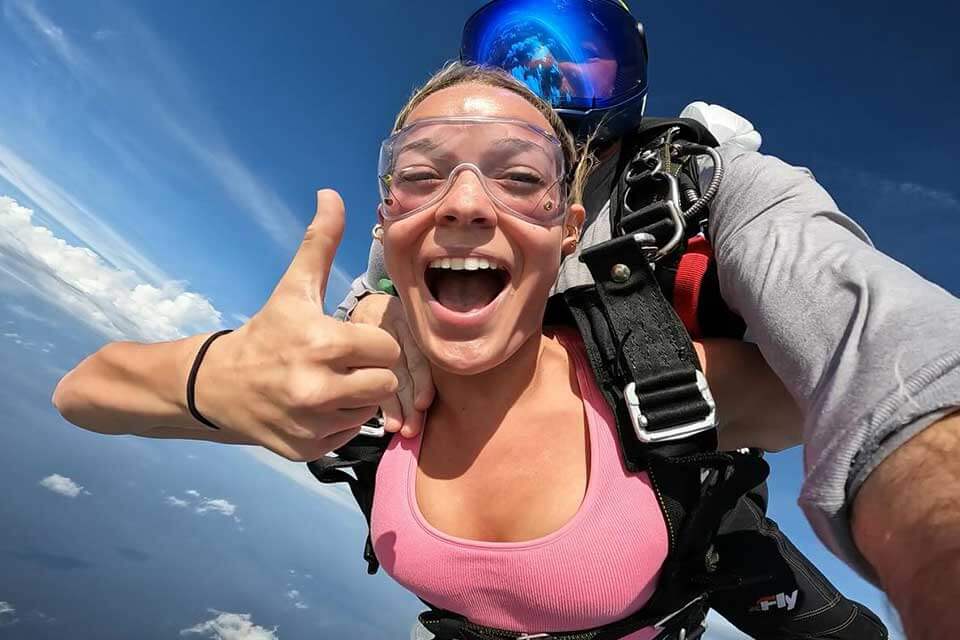
Types of Skydiving Locations
Whether you’re leaping from a plane at a traditional dropzone, flying over stunning landscapes, or zipping through the Tower Bridge in London (!!), each type of skydiving location offers a thrilling experience.
Commercial dropzones.
As the most common places to skydive, commercial dropzones offer it all – tandem skydives, solo jumps, training, gear rental, etc. Some airports are established solely for skydiving, while other dropzones operate at already-operational airstrips or regional airports.
Special scenic spots.
Some commercial dropzones double as scenic spots – and Skydive Palm Beach is one of them! Jumping over water and across stunning landscapes is always special, whether that’s Lake Okeechobee right here in Pahokee, the Atlantic ocean in Key West, the Swiss Alps at Skydive Interlaken, or The Palm in Dubai.
Why? It makes an already extraordinary experience that much more epic. It’s like … if a “regular” sunset is a 10/10 … a sunset while skydiving is an 11/10 … and a sunset while skydiving with the glittering water below is a 100/10!
Demonstration jumps.
Demo jumps are the black sheep of skydives. These are special one-off skydives that are conducted outside of regular dropzones; they’re usually at events for the public, private parties, or in urban settings. Demo jumps take a lot of planning and have some special requirements:
- FAA authorization. Permission from the FAA ensures that the skydive is in compliance with national aviation regulations, like safety protocols and airspace management. A critical reason that communication with the FAA is required is to ensure the airspace will be clear. Imagine getting ready to leap into an NFL game only to be told there are multiple other aircraft in the area – yikes! The FAA helps to keep everything running smoothly.
- Qualified jumpers. Not just anyone can make one of these special skydives. They require an extreme level of precision and skill (like landing in tight spaces and unfamiliar or high-profile areas) which can only be achieved after hundreds, if not thousands, of previous skydives. Skydivers who make demo jumps are required to obtain a PRO rating issued by the USPA.
- Ground support. Have you ever planned a party only to realize on the day of that you overlooked some minute but very necessary detail? We cannot afford to have this happen during demonstration jumps, or any skydive for that matter! Ground crews cover all the bases and communicate with the aircraft, which is a critical safety measure.
What Type of Skydiving Center is Skydive Palm Beach?
Skydive Palm Beach is a prime example of a commercial dropzone that also functions as a destination spot for jumping! We don’t offer solo skydiving training so that we can solely focus on providing exceptional and memorable tandem skydives. Our approach allows first-time jumpers to experience the beauty of human flight and the Florida coastline – it’s unmatched!
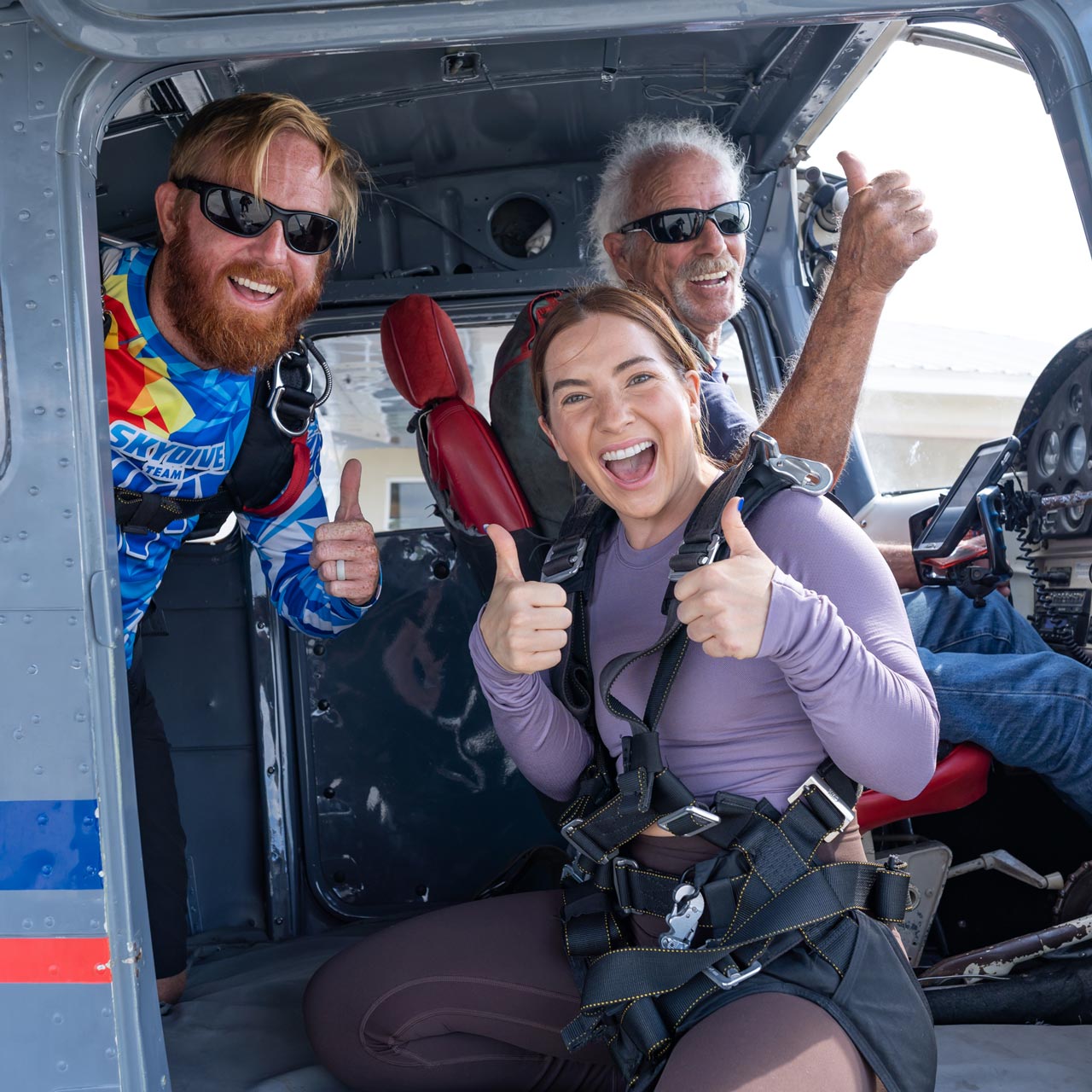
What’s Required for a Dropzone to Exist?
At the bare minimum, and excluding very unique instances, there are eight requirements that dropzones must have and adhere to in order to exist:
- Airspace access. FAA approval is critical! This is one reason dropzones tend to be in less populated areas.
- Runway. Grass strips count, but there must be a runway able to accommodate the aircraft used for jumping.
- Aircraft. Need we say more?
- Landing area. Skydivers need plenty of space to land. An ideal landing area can be landed in from all cardinal directions to account for the wind.
- Skydiving equipment. There’s lots of equipment needed to kickstart a skydiving operation – parachutes, jumpsuits, altimeters, and so much more!
- Qualified people. Having people with extensive experience in the sport is paramount to having a successful dropzone.
- Safety protocols. Having a concrete list of rules, regulations, and “what to do if’s” laid out by the dropzone gives skydivers peace of mind and keeps everyone on the same page.
- Regulatory compliance. Adhering to regulations set by the USPA, FAA, and local authorities ensures that all skydiving operations meet safety standards and legal requirements, providing a secure environment for jumpers and the public.
Jump Pilots: The Unsung Heroes of Skydiving
Although skydiving pilots may seem like the chillest of aviators, they are the backbone of our operations. To become a jump pilot, one must meet stringent FAA standards, including a commercial pilot’s license. They have to confidently communicate with the towers in the area to ensure the airspace is clear, obtain a NOTAM (Notice to Air Mission) for each day of jumping, stay in touch with the ground crew at the dropzone, and accommodate jumper requests. They do it all. Jump pilots’ precise navigation skills and efficient climb to jump altitude keep every skydive on point. We’re thankful for our diver drivers!
Have we sparked your curiosity about the wild, wonderful world of skydiving? Come jump with us today! Feel free to reach out with any further questions. Blue skies.
Categories:
You May Be Interested In:

Can You Talk While Skydiving?
3 weeks ago by Skydive Palm Beach
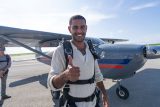
The Most Unforgettable Engagement Idea, EVER!
1 month ago by Skydive Palm Beach
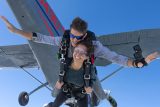
3 Phases of Skydiving: What Happens After You Exit the Aircraft?
2 months ago by Skydive Palm Beach

What Happens After the First Jump?
2 months ago by Skydive Palm Beach
